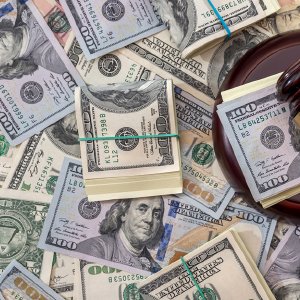How Heroin Use Doubled in America in Less Than Two Decades

In less than 20 years, heroin use in the United States doubled, and overdose deaths increased by more than 500 percent. Most heroin addicts (about 80 percent of them to be exact) started by misusing prescription opiates before they ever touched heroin. Then they went on to use heroin because it’s cheaper and often easier for them to obtain.
The opiate epidemic may have begun with prescription opiates back in the early-2000s, but the problem soon grew into a multi-faceted public health crisis. Today, about 130 Americans die every day from opioid overdoses, whether those deaths are from prescription painkillers, illicit, synthetic opiates, heroin, or a combination of the above.
Recognizing the source of the current heroin problem means acknowledging the fact that the American people were convinced by pharma companies that painkiller meds were safe and non-addictive. That’s what ultimately led to an increase in addiction and deaths as more and more Americans got hooked on pain pills and then went on to use heroin. But what will it take to solve the problem? What will it take to eliminate addiction and save lives?
Heroin and the U.S.
The best way to understand the scope of any drug problem is to examine the statistics connected to that problem. For heroin, the statistical evidence paints a grim picture.
Heroin, the semi-synthetic, highly addictive opioid, is not a new drug. Heroin has been a problem in the U.S. for decades. However, it wasn’t until recent years that heroin use began to increase dramatically. For example, from 2010 to 2017, heroin-related overdose deaths increased more than five-fold, with the number of people using heroin in the U.S. more than doubling. Not only did heroin use become more common, but it became more dangerous too.
There is no doubt that the increase in heroin use has been driven mostly by the rise in prescription painkiller addiction across the States. As stated above, about 80 percent of heroin users were first addicted to prescription opiods.
Here are how the events unfolded that gave us the modern-day heroin crisis:
In the late-1990s and early-2000s, pharma companies and medical institutions urged doctors to increase their prescribing rates for prescription painkillers. Pharma companies assured the medical community that patients would not become addicted to such pain relievers.
Prescribing of opiates went up dramatically. Immediately following that, millions of Americans became addicted to drugs they had been told were supposed to help them. Millions more started experimenting with prescription opiates, thanks in part to the increased ease of access to such drugs.
Around the mid-2000s and into the early-2010s, doctors began cutting back on their prescribing trends, and pharma companies became the target of much of the blame for the opiate epidemic.
However, while enacting more conservative prescribing trends certainly was a move in the right direction, a resulting cutback in the availability of prescription opiates left millions of addicts without a drug supply. And so, interest soared in heroin, a cheaper and now more accessible alternative.
The increase in heroin use also led to a rise in heroin deaths. In 2017, 15,000 people died from heroin overdoses, compared to fewer than 3,000 heroin deaths in 2010, and fewer than 2,000 deaths in the year 2000.
The Importance of Addressing All Aspects of the Opiate Crisis
One of the key takeaways from observing the opiate epidemic is that it isn’t enough to merely focus on one sector or area of the opiate problem. Remember, a significant factor in the recent resurgence of heroin use was the well-intentioned crackdown on painkiller prescribing. As prescribers began to prescribe painkillers less often and in fewer quantities, that in turn reduced the number of painkillers available to addicts. The result? A sudden demand for other types of opioids. Heroin cartels were happy to meet that demand, and so heroin use soared.
The above series of events is a good lesson in why we have to address all aspects of the opiate problem. We can’t just curb prescribing and assume that it will solve the problem for us. Curbing prescribing is sensible and needed, but it is only one step in addressing the drug problem.
What decisive and meaningful efforts can we take to ensure that all aspects of the opiate epidemic are addressed effectively?
Residential Addiction Treatment Offers a Pathway to Freedom

Opiate addiction is a potentially fatal crisis that requires specialized care to treat. Sadly, opiate addiction does not just “go away” on its own. If we want to take decisive and meaningful efforts in eliminating the opiate epidemic, we have to focus primarily on treating those who are addicted to opiates.
When someone is addicted to an opiate, that addiction will have a physical component as well as a psychological component. Treating addiction effectively requires addressing both aspects of the drug habit.

Residential drug rehab centers offer the safest and most effective pathway to success. That’s because such rehabs can help recovering addicts by first tackling the physical side of addiction through withdrawal and detox. Next, residential centers can help recovering addicts work on the mental, behavioral, spiritual, and psychological aspects of addiction.
Not creating a comprehensive environment for positive change through treatment is likely to leave stones unturned, and that can lead to relapse. Narconon uses proven rehabilitation technology, delivered in a safe, residential environment, to get to the problem of addiction at its source. Narconon helps addicts who thought they had no hope left. Narconon provides them with a reliable and stable path for long-term success.
If you have a family member or loved one who is struggling with an addiction to heroin, be sure they get help as soon as possible. Narconon can help your loved one. It starts with one phone call, and that can lead to a lifetime of better choices and healthier decisions. Call today.
Sources:
- https://www.drugabuse.gov/drugs-abuse/opioids/opioid-overdose-crisis
- https://jamanetwork.com/journals/jama/article-abstract/2760729
- https://www.cdc.gov/drugoverdose/data/heroin.html
- https://www.drugabuse.gov/drugs-abuse/opioids/opioid-overdose-crisis
- https://www.drugabuse.gov/related-topics/trends-statistics/overdose-death-rates


